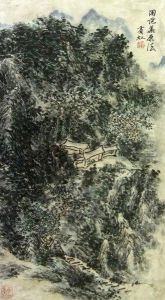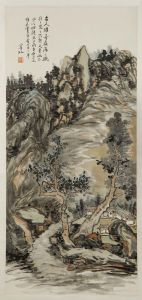Huang Binghong Paintings
Huang Binghong was a Chinese artist, scholar, and one of the last great traditionalist painters. Born on September 27, 1865, in She County of Anhui Province, Huang was immersed in the rich cultural heritage of the region, which is known for its contributions to the Anhui school of traditional Chinese painting.
Huang developed a profound understanding of traditional Chinese art, including both painting and calligraphy, from a young age. His initial training was in the conservative style of the Song and Yuan masters, which he absorbed and later transformed through his personal interpretation. As a young man, Huang traveled extensively throughout China, studying ancient sites and artworks, which deeply influenced his artistic development.
Throughout his career, Huang Binghong was dedicated to both the creation and teaching of art. He served as a professor and eventually became the president of the China Academy of Art in Hangzhou, influencing generations of Chinese artists. His teaching emphasized the importance of mastering traditional techniques while also encouraging innovation and personal expression.
Huang Binghong's own paintings are characterized by their bold brushwork and innovative use of ink washes. He was particularly known for his landscape paintings, which often exhibited a misty and atmospheric quality reminiscent of traditional literati painting but with a modern twist that reflected his personal style. Despite his deep respect for historical Chinese painting, Huang did not shy away from experimenting with new techniques and was influenced by the changing times, including the influx of Western art concepts.
Huang's work was not only celebrated in China but also gained recognition internationally. His paintings were exhibited in Japan during his lifetime, and later, his works would be shown in other parts of the world, contributing to the global appreciation of Chinese art.
Huang Binghong passed away on August 25, 1955. His legacy lives on through his art, which continues to be studied and revered, as well as through the numerous students he taught, many of whom became significant artists in their own right. Huang left behind an indelible mark on the world of Chinese art, bridging the gap between traditional techniques and the burgeoning modernist movement that was to take hold in China during the 20th century.

